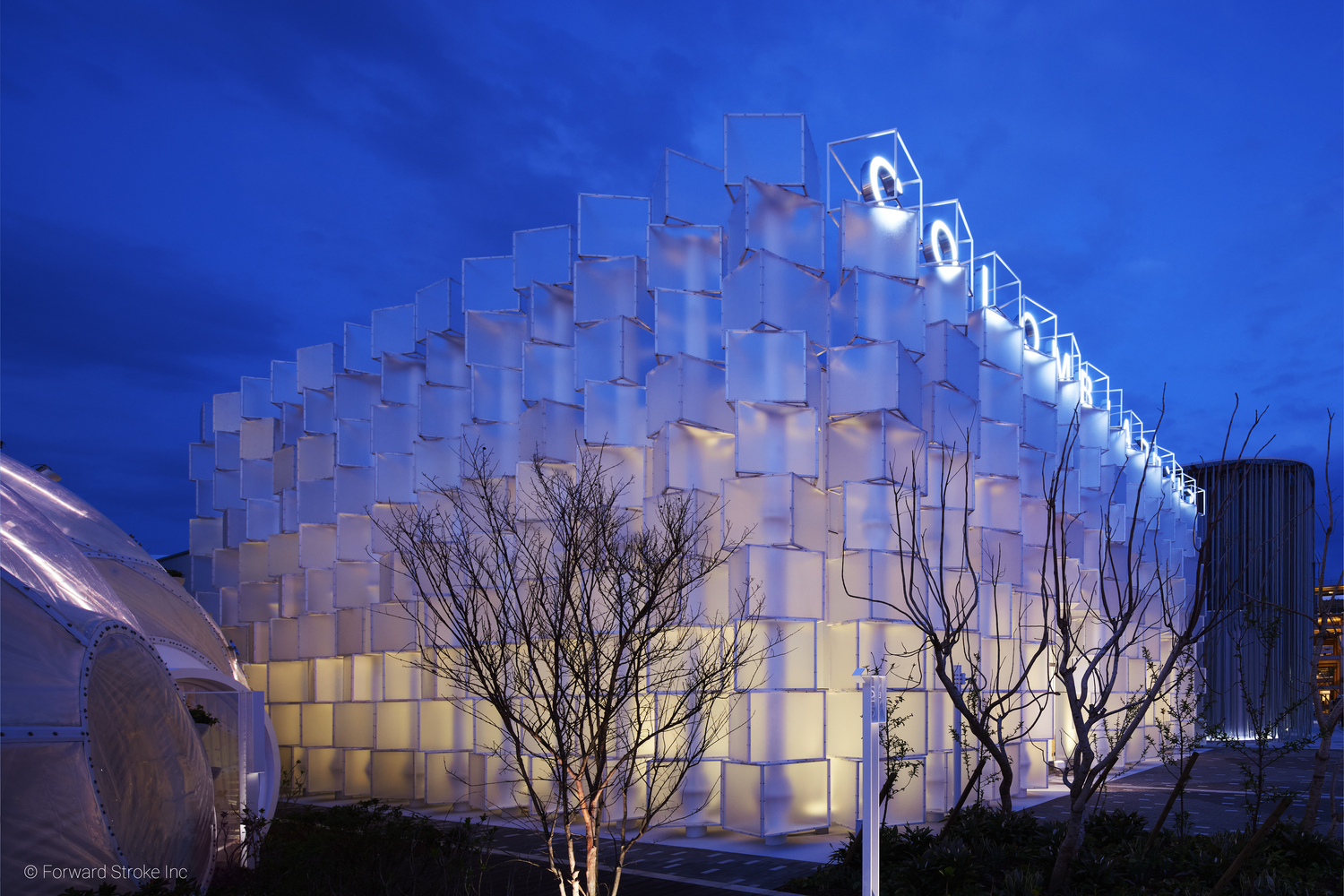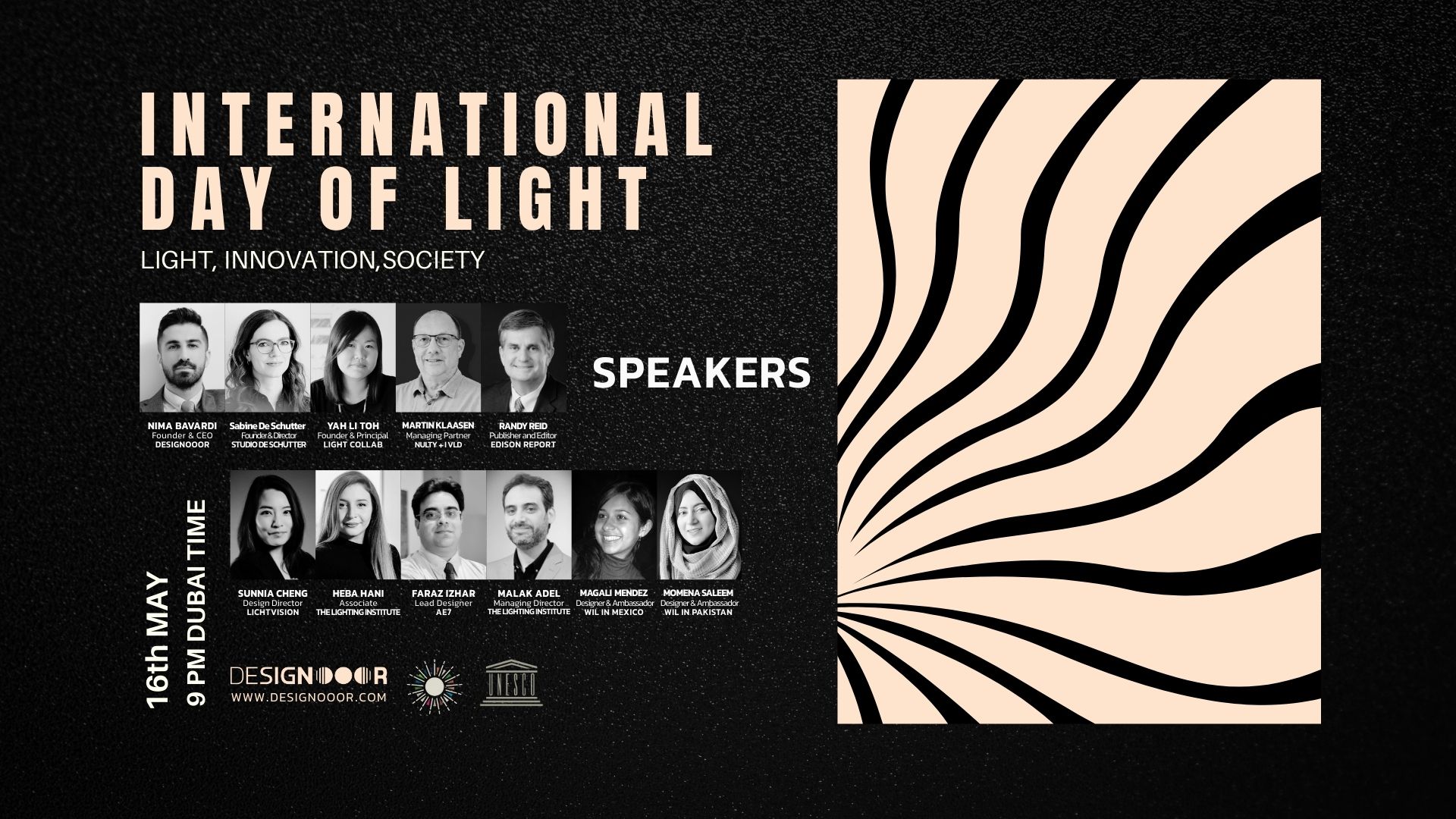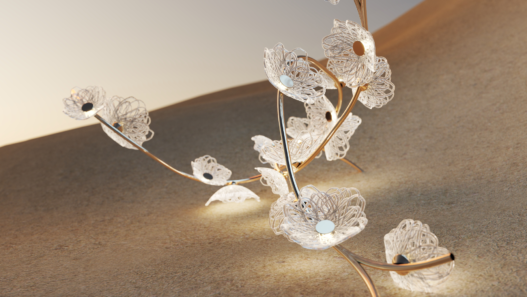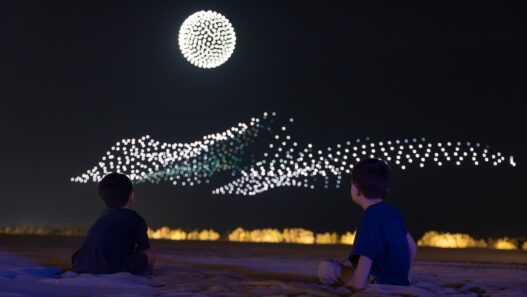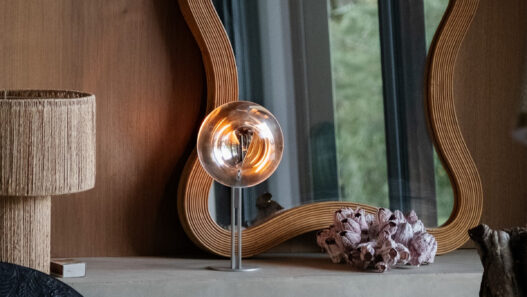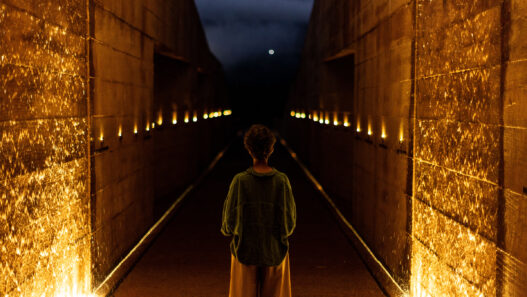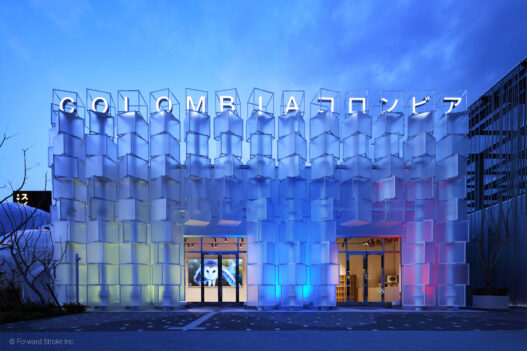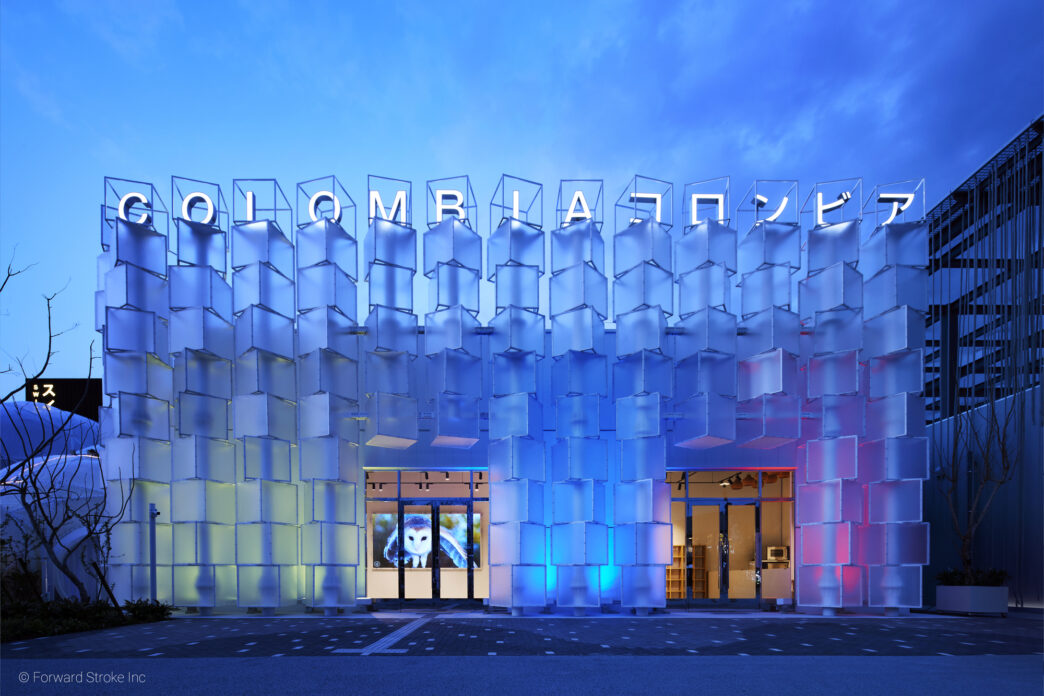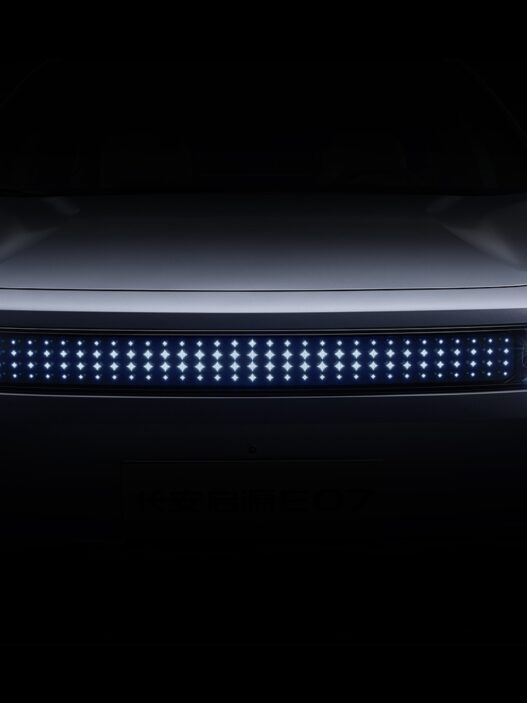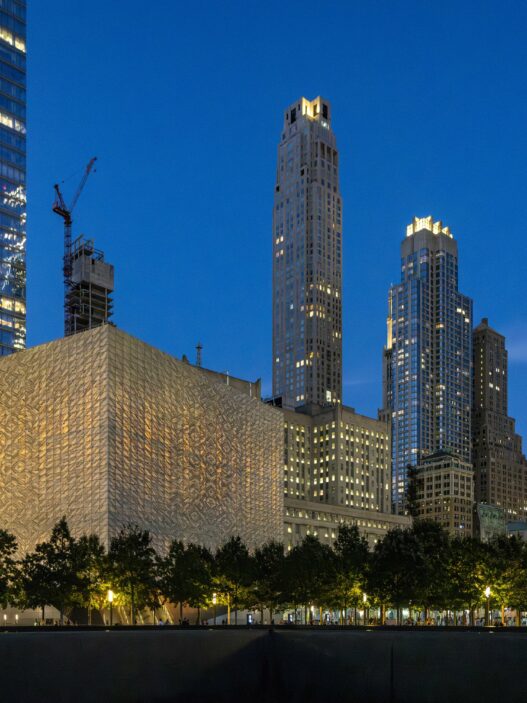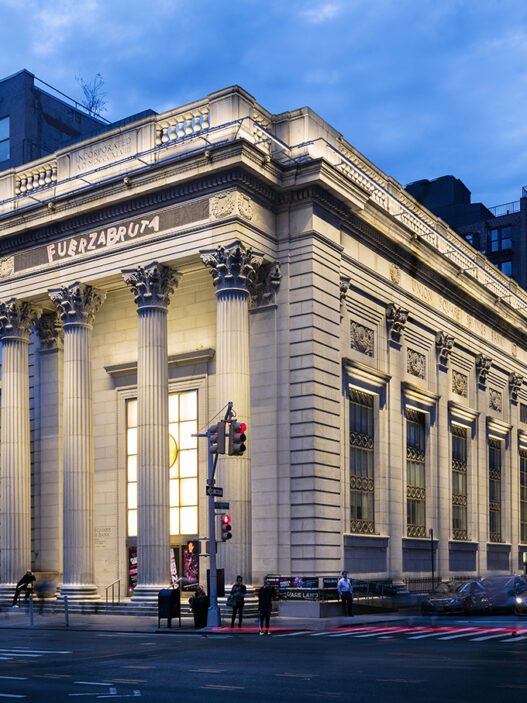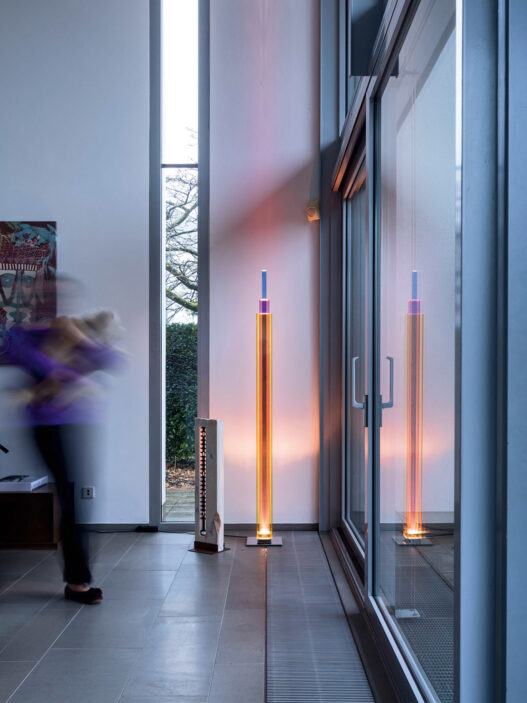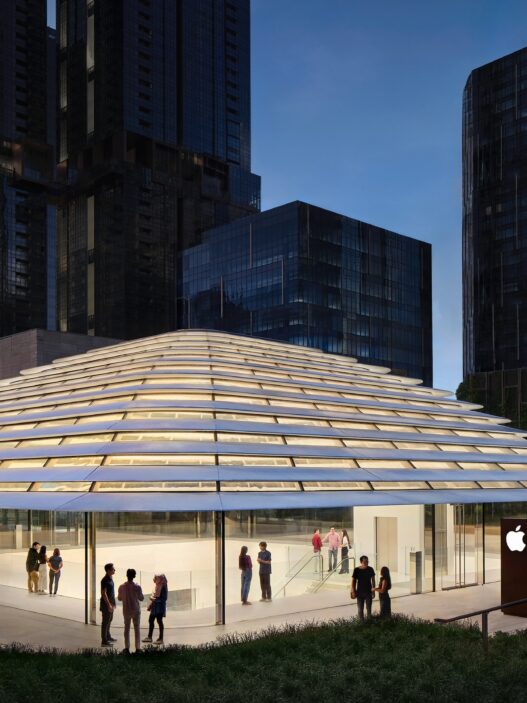Unforgettable Moment, Boy Encounters Ice!
What unfolds in front of us is not simply a façade but a constructed allegory, where architecture and light collaborate to re-enact a literary image. The inspiration drawn from One Hundred Years of Solitude, the unforgettable moment when a boy encounters ice for the first time, becomes the conceptual backbone of the pavilion. The translucent cubic panels, arranged in shifting angles, are not mere modules of construction; they are fragments of frozen wonder, suspended between solidity and transparency. With every shift of daylight and every pulse of artificial illumination, the façade simulates the fragile, crystalline presence of ice, a substance both ordinary and miraculous, and in doing so translates Márquez’s metaphor into a sensory experience that visitors can inhabit.
The lighting design operates as the storyteller. Color-controlled illumination animates the surface, with deep blues evoking cold stillness and sudden bursts of red and violet suggesting the latent warmth and vitality concealed within. The façade is never static; it changes constantly, echoing the way memory and perception of a singular moment can evolve. This mechanism is not decorative but narrative, guiding the visitor through a visual prelude before they cross the threshold into Colombia’s cultural core. The illuminated fissures between the cubes serve both as subtle orientation devices and as metaphors for cracks in ice, inviting curiosity and entry. The success of this system lies in its ability to balance sensory drama with navigational clarity, even if its long-term legibility under the demands of a crowded exposition remains an open question.
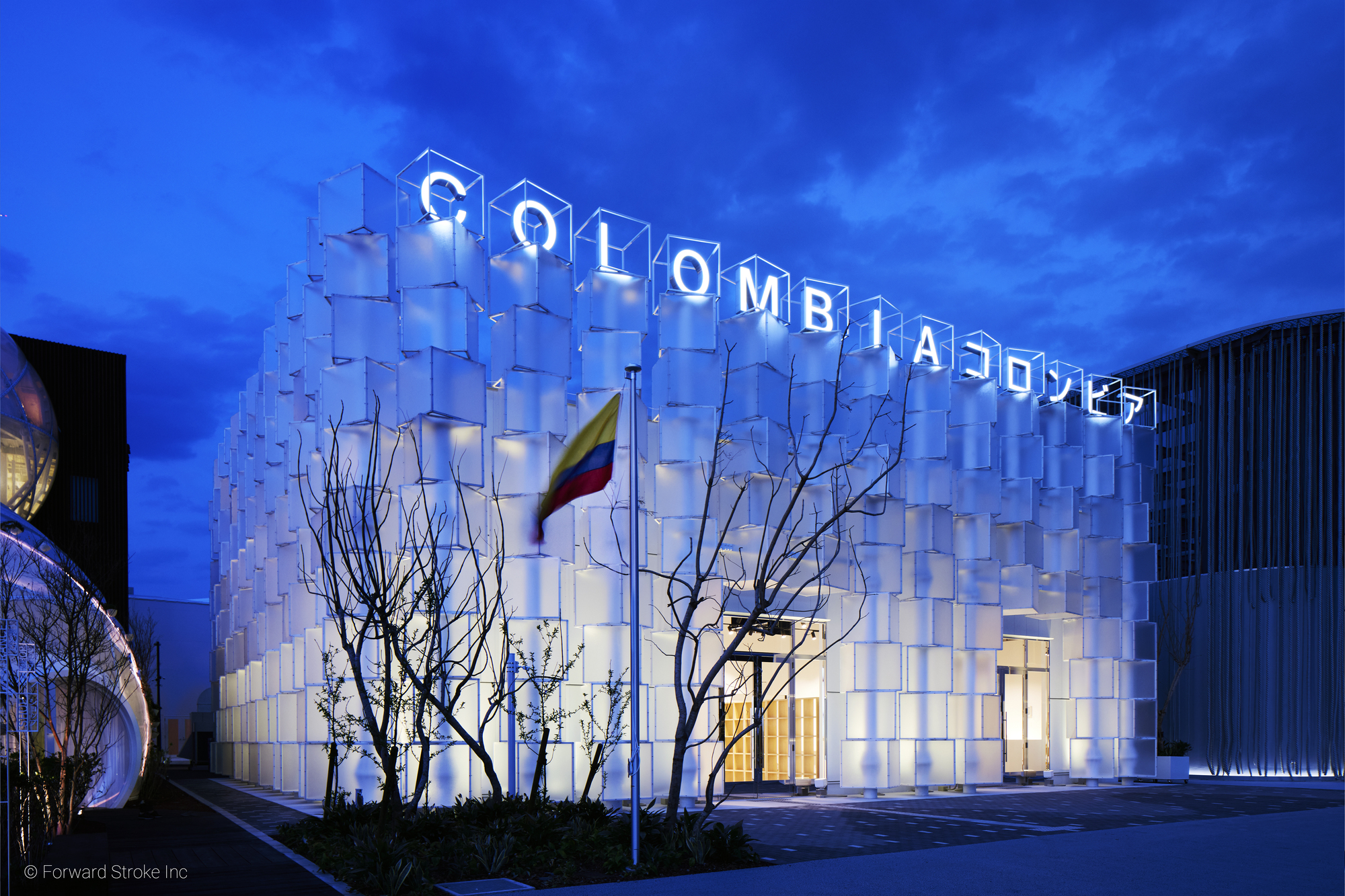
On a perceptual level, the façade relies on a disciplined rhythm of repetition, where identical modules are tilted to create irregularity within order. This grid does not read as a rigid wall but as a breathing, porous screen where light seeps through like water freezing into crystalline form. The resulting gestalt is less about mass than about the interplay between volume, void, and luminous vibration. Shadows fall across the pavement and onto adjacent surfaces, turning the immediate surroundings into part of the scenography. Light here is structural: it reshapes how the architecture is understood, oscillating between the real and the ethereal. Yet the system’s richness depends heavily on time of day; under direct daylight its intricacies risk losing intensity, while dusk and night unlock the full spectrum of its expressive potential.
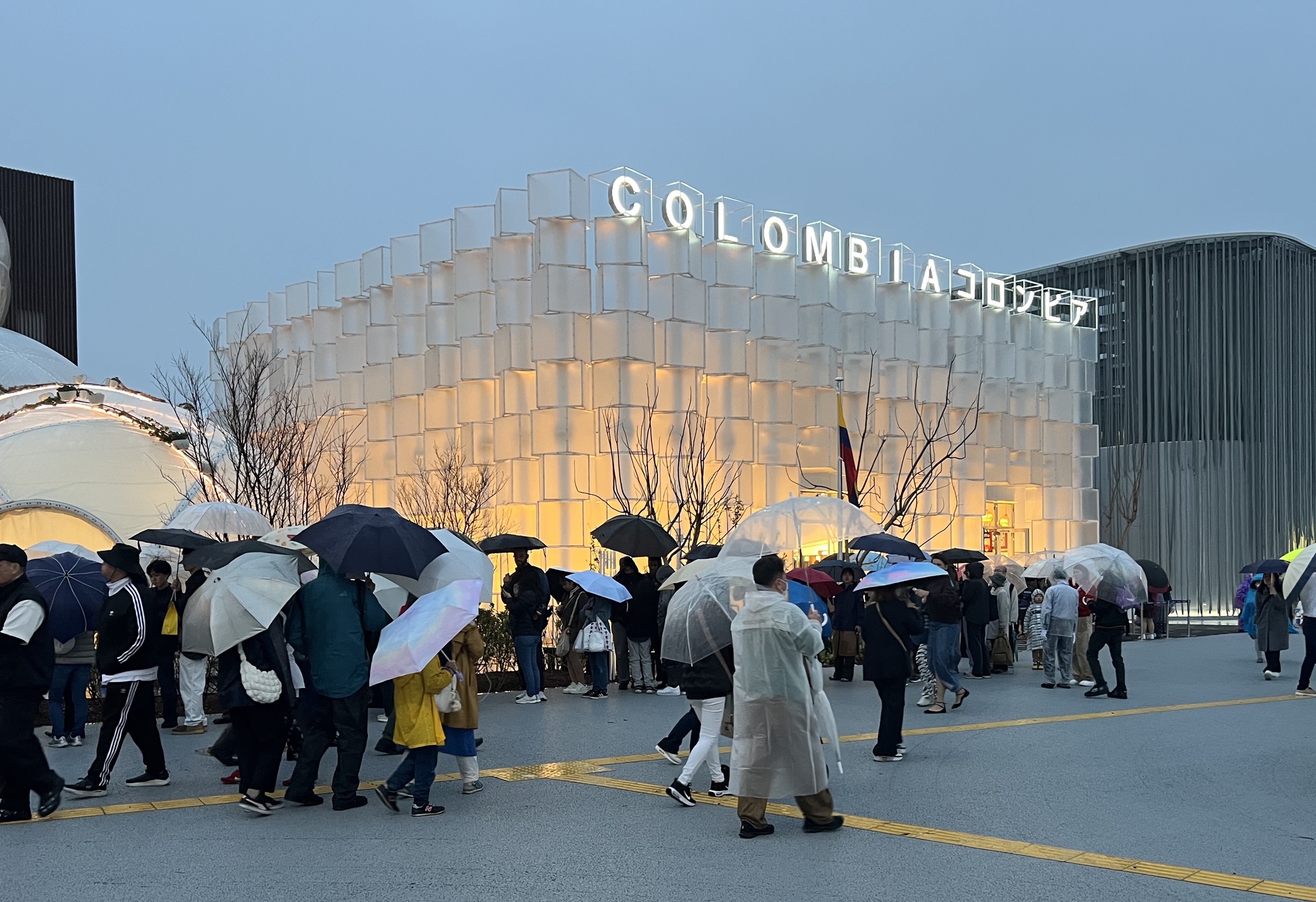
From the standpoint of sustainability, the choice of lightweight polycarbonate and prefabricated steel framing is pragmatic, allowing for efficient assembly, adaptability, and eventual reuse. However, the reliance on dynamic, color-shifting lighting raises legitimate concerns about energy consumption, an issue magnified in the context of an expo where ecological responsibility is under scrutiny. Still, the deeper achievement of the pavilion lies in its capacity to transform a literary metaphor into built form and lived experience. The designers have not only produced a striking architectural object but have captured the essence of a narrative moment, one in which ice was not just cold matter, but revelation. In this sense, the pavilion fulfills its promise: it makes visitors pause, feel, and remember, proving that architecture, when fused with light and story, can extend far beyond physical presence into the realm of collective imagination.
